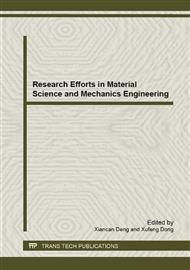p.256
p.260
p.266
p.271
p.276
p.281
p.286
p.293
p.298
Estimation of Strength Parameters and Finite Element Simulation of Lime and Cement Stabilized Granular Soils
Abstract:
Finite element modeling of stabilized soils requires various data obtained from comprehensive laboratory experiments. High shear strengths and expensive test procedure of lime and cement stabilized soils almost make it impossible to attain a well describing data of stabilized materials to apply in FE models in some cases; Thus, this study has considered unconfined compressive strength as a not expensive laboratory strength test and utilized estimating functions presented recently for stabilized materials to evaluate the shear strength parameters of treated materials to be used in computer simulations. The estimated properties were applied in FE modeling to verify which estimating function is more appropriate for lime and cement treated granular soils. The study results show that at the mid-range strength of stabilized soils most of applied functions have a good compatibility with laboratory conditions but at lower or higher strengths some of functions would excel.
Info:
Periodical:
Pages:
276-280
Citation:
Online since:
April 2013
Authors:
Price:
Сopyright:
© 2013 Trans Tech Publications Ltd. All Rights Reserved
Share:
Citation:


